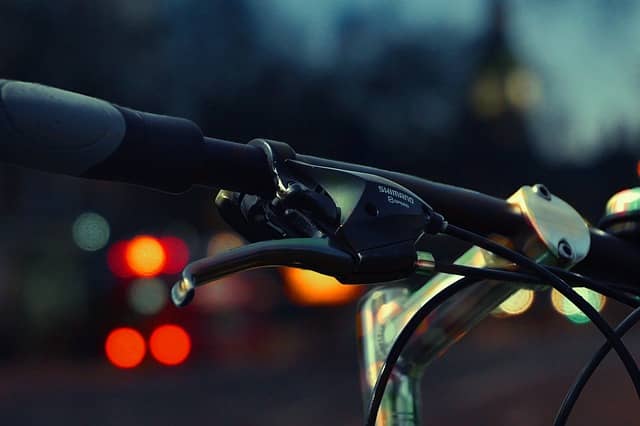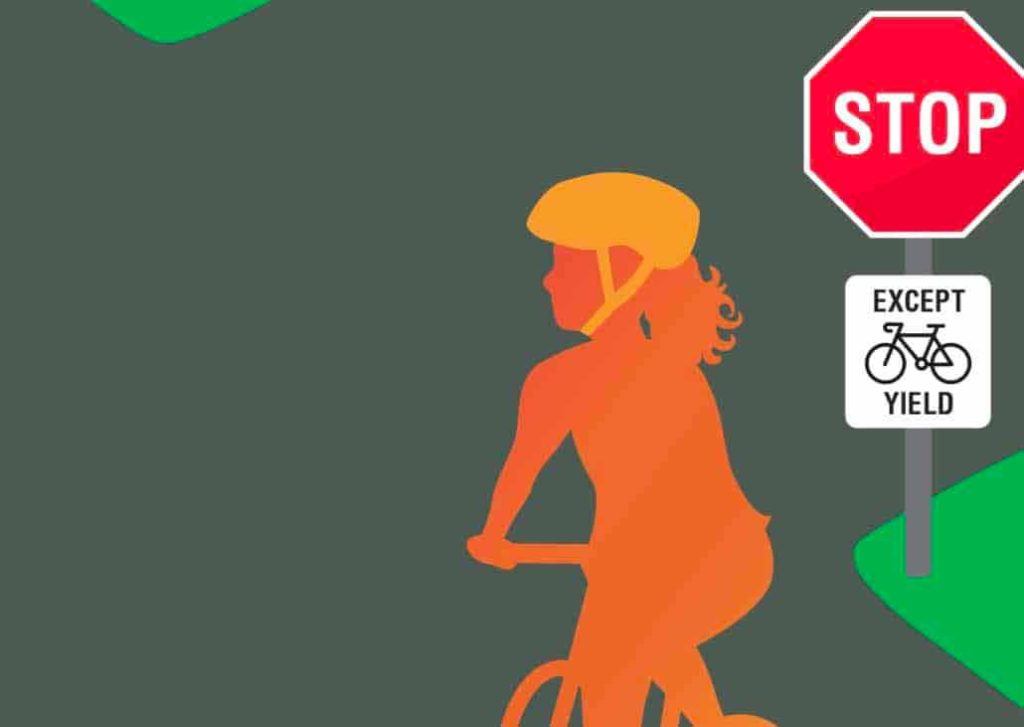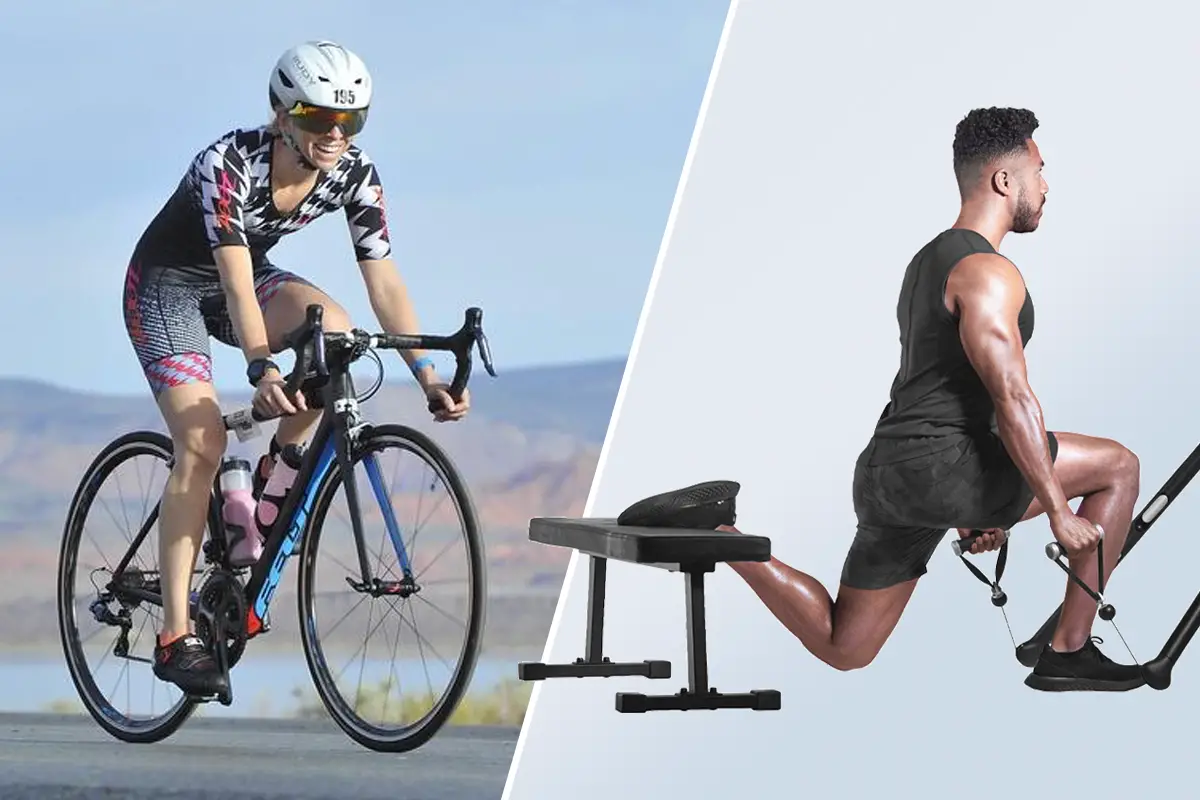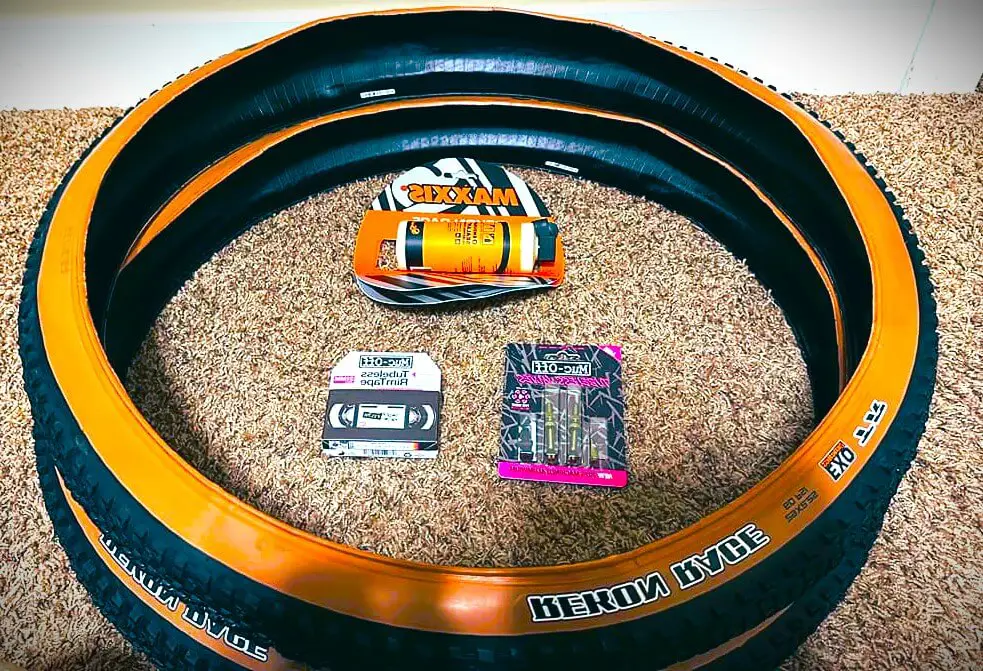Do Bicycles Have to Stop at Stop Signs and Stop Lights ?

As an affiliate, we may earn from qualifying purchases. We get commissions for purchases made through links on this website. You can read more on our Affiliate Disclaimer here.
Well, do they? In short, yes and no. And it depends on the local law. But since it’s such a nuanced matter that different states have different laws surrounding it, it means a simple yes or no answer won’t cut it. Let’s try and break the matter down, then, and see whether bicycles have to stop at stop signs and stoplights or not.
Do Bicycles Have to Stop at Stop Lights?
We all know the function of traffic lights: red signals the driver to stop, yellow prompts to slow down, and green gives the okay to go ahead. At a red light, drivers stop regardless of traffic and danger. They can and should only move ahead when the light changes to green. All vehicle drivers know this. But are bicycles considered vehicles?
Well, they kind of are. But still, cyclists don’t all have to stop at red lights the same way as other vehicles. As it happens, quite a lot of strife and argument may result from this privilege cyclists get over other vehicle drivers. The laws of many states also compel cyclists to follow the same traffic lights as cars and trucks and buses. But some don’t.
For example, the state of Idaho allows cyclists many privileges over other vehicles when it comes to following traffic signals. In fact, the law is known as the Idaho Stop Law which many people in other states also want to adopt and which many have already adopted.
The Idaho Stop Law is quite interesting when we break it down, as the law comes from a convenience that almost acts as a loophole, giving an advantage to cyclists.
As it happens, the red traffic sensor light does not often pick up a cycle’s weight, so the cycle and the cyclist do not get identified in the automated traffic system. As a result, instead of a clear red signal, a faint, “stale” light is emitted.
If the sensor cannot indeed pick up the cyclist and so if a stale light is seen, then the Idaho Stop law permits cyclists to neglect traffic lights and treat the red signal as a stop sign, which means they can move ahead after a slight stop. Isn’t that neat?
What is really the problem if the sensors don’t pick up a cyclist? One, the cyclist can stop as long as he wants but the red light may not turn green. That’s why many states allow cyclists to pass if they stop at red lights but see that the light is not changing after a while. Another major problem is that the flow of traffic is hampered due to this oversight, and you can imagine a lot of problems that can happen for perceived traffic vs. actual traffic.
But besides these logistical problems, the main reason for the Idaho Stop law is safety. Yes, it may appear ironic that allowing cyclists to disregard traffic signals is for their safety.
Here are the reasons:
- Bikes — running on motors or not — are quite fragile, even if you wear helmets and pads. Compelling cyclists to stay beside traffic can be risky instead allowing a left turn is a safe thing, as there is the scope of cyclists being struck by people who are turning.
- Bikes are normally supposed to run on bike lanes. Obviously, all roads do not have bike lanes. Therefore, allowing cyclists to bypass traffic lights encourages cyclists to use alternative roads with less traffic.
- Cyclists have a wide field of vision, right? They are not cooped up inside a vehicle with a roof, so they can see just as well as they can when not riding. Due to this advantageous line of sight over car drivers, cyclists can look out for other vehicles and pedestrians on the way. Therefore, it is relatively safe, both for the traffic as well as for the cyclist, to allow cyclists to ignore traffic signals and keep on moving.
The Idaho Stop law makes a whole lot of sense, you say? Well, many other people think so as well. Many other states have adopted the Idaho Stop law too. Here is a list of states which, with some modifications to the Idaho Stop law, allow cyclists to bypass traffic lights:
- Arkansas
- Colorado
- Delaware
- Idaho
- North Dakota
- Oklahoma
- Oregon
- Utah
- Washington

Do Bicycles Have to Obey Stop Signs?
Now that we have discussed traffic lights, what about traffic signs or road signs? The answer to whether bikes have to obey stop signs, again, is nuanced. It depends on the law, and the Idaho Stop law also extends to stop signs!
First, what is the difference between the red light and the stop sign? The red light demands a complete stop of vehicles until the green light flashes. On the other hand, the stop sign demands a temporary stop.
Afterward, if it is safe to proceed, then the vehicles are welcome to do so. In short, the stop sign is a short-term stop whereas the red light is an extended stop.
The Idaho Stop law, as you can notice, contains the word “Stop,” and it is relevant to both the stop signal and the stop sign. The Idaho Stop law allows bikes to treat the red lights as stop signs and stop signs as yields. A Yield or Give Way means the driver has to prepare to let other vehicles or pedestrians bypass it.
In other words, bicycles do not have to obey stop signs in states that have the Idaho Stop law, but they must still exercise caution slow down, and be prepared to yield.
What’s the purpose of these tweaks in law? Or being allowed to yield instead of completely stopping? Again, much of the purpose is logistical in nature.
As it happens, stop signs are meant for cars on risky roads like risky junctions. These are meant to slow the cars’ speed so that they can safely cross such roads. Obviously, cars go much faster than bicycles. Therefore, the necessity of stopping is naturally much more for cars than bicycles.
What’s more, bicycles also require more time to accelerate. Compelling them to stop at every stop sign would actually slow down traffic due to more time required to move past.
For all these reasons, bicycles don’t have to obey stop signs as other vehicles do.
Why a bicycle cannot stand on its own? Read about the scientific facts here.
Do Traffic Rules Apply to Cyclists?
But just for the sake of convenience, should bicycles be allowed to roll through stop signs and disregard red lights? No, of course not. Safety is always the priority.
It should be emphasized that the Idaho Stop law does not allow bicycles to completely ignore traffic lights and signs. Instead, the rules are rather less strict for cyclists than for other riders.
In particular, the traffic rule for red lights is relaxed for cyclists: instead of having to stop till the green light flashes, cyclists can simply stop for a bit and see if the sensor catches them or not. If a “stale” light is emitted, then the cyclists are allowed to go.
As for stop signs, the traffic rule is relaxed in the way that it allows cyclists to treat stop signs as yield and to roll through stop signs without completely stopping.
However, all this assumes that the Idaho Stop law is in use in the area. For areas where the Idaho Stop law is not enforced, cyclists are treated just like any other driver, and then ALL traffic rules apply to them.
Should Cyclists Be Allowed to Roll through Red Lights and Stop Signs?
We have already discussed why the Idaho Stop law makes sense for both red lights and stop signs. However, not everyone agrees. Many may point out that though bicycles are much slower than cars, they are still considerably faster than pedestrians and even those on skateboards.
Indeed, the ideal thing would be for cyclists to stick to bike lanes. But that’s idealistic thinking. It cannot be helped that bike lanes do not exist on every road, and nor can they be practical. Therefore, the main issue is safety. If bikes are treated like other vehicles, is it safer for them and others or not?
Actually, there is evidence that the Idaho Stop law does in fact make it safer for cyclists. It was reported in a study done in 2009 that cyclist injuries decreased by 14.5% when the Idaho Stop law was implemented. Delaware too saw a decrease of 23% in cyclist injuries related to stopping signs. Therefore, not only does the Idaho Stop law not cause more risk to cyclists, it in fact reduces risks.
How about knowledge of these rules? Shouldn’t cyclists and prospective cyclists be educated about their rights? Actually, there was an education provision in the original Idaho Stop law.
However, it was found that young riders were enthusiastic about following the new law. And so it was felt to be no longer necessary to educate riders about it. Indeed, the law was felt to be second nature to cyclists!
With all that being said, it should again be pointed out that the Idaho Stop law only allows cyclists to have relaxed rules for the sake of safety. If in using those relaxed rules, safety is compromised, then cyclists are to not use those rules as a loophole and make excuses later on. The law states that if the coast is clear and safe, only then can cyclists use those privileges.

How Does the Law Change When Cyclists Are Walking Their Bikes?
Yes. The answer to a question is finally a 100% yes. When cyclists dismount their cycles and walk them, then the law changes. The cyclist is no longer considered a vehicle driver, but a pedestrian.
Cyclists normally walk their bikes when crossing an intersection or moving on the sidewalks. At that time, the cyclist is considered a complete pedestrian. In fact, it is frowned upon or even illegal to ride bikes on a sidewalk or when crossing an intersection.
Unless you’re a child, you must dismount your bike and walk it when moving through such places. Otherwise, you might accidentally strike other pedestrians.
Therefore, since cyclists are treated as pedestrians when walking their bikes, they naturally have to follow the traffic rules.
Who Is at Fault in a Collision between Cyclist and Driver?
God forbid, but if a collision occurs, then you need to know who is to blame between the cyclist and the driver. True, a cyclist has more to lose since he or she is quite unprotected when compared to a car driver — not to mention a truck or bus driver — who is riding a much heavier vehicle. However, an expensive ride can also need more damage costs when compared to damage to your bike.
Still, we would say the cyclist stands to lose more in a collision simply due to safety reasons. Because of this, you may think that a car driver would be blamed more than the cyclist, right?
No. The most important reason for being at fault in a collision is really whose fault it was. If the driver is largely at fault, then the cyclist may recover a percentage of their damages.
This is in line with the comparative negligence fault laws. According to these laws — which most U.S. states follow –, the fault is shared between both cyclist and driver depending on who was more at fault.
However, not all states observe these laws. Maryland, Virginia, Alabama, and North Carolina observe the law of contributory negligence.
This means that if one party has a minimum fault (even 1% at fault) and the other party maximum fault, then no compensation will be given to either party. In other words, contributory negligence laws allow recovery only in the case where either the cyclist or the driver is completely innocent.
Rules of the Road
Before moving further, let us clarify the rules of the road that apply to cyclists:
- Most traffic rules — except for the Idaho Stop law and when walking bikes — apply to bikes just as they do to other vehicles. This means moving in the same direction as traffic. Cyclists also have to obey road signs, though they may treat stop signs as yields, without having to completely stop.
- Cyclists must yield to people walking in crosswalks.
- Cyclists must signal the direction they are turning — by using an arm — unless they have to use both hands to control the bike.
- It is not mandatory to use bike lanes.
- Cyclists have the same right to use the road as other riders. They can use whichever lane they want except for prohibited roads.
- Only one person per bike! Unless the bike is specifically equipped with a second seat, that is.
- Cyclists are allowed to ride side by side with other cyclists. However, this is of course only if traffic and safety allow for this to happen.

Best Practices
Here are a few best practices that you can do that will ensure an increase in safety as well as enjoyability:
- Know your rights and responsibilities. Know if the Idaho Stop law is followed in your area. If so, do use it, because following that law will lessen traffic jams.
- Don’t ride your bike on sidewalks, please!
- Yield for any passerby and let them cross. Safety over speed!
- Warn before taking a turn and when passing, please! Ring your bicycle bell or simply give a vocal warning. You can also use one arm to signal a turn.
- Move in a predictable line. Imagine a cyclist zigzagging across a lane. If it’s empty, then fine. But if not, it’s incredibly annoying for others, not to mention dangerous for both parties. Therefore, ride linearly when you can. Build this practice.
- Know that you can always dismount your bike and walk on the sidewalk. Whenever you face any physical or emotional problem or if you get an emergency call, pull over and walk on the sidewalk. It is perfectly fine. But do ensure you look behind and around you to check whether sudden dismounting is fine, of course.
A Final Word
To conclude, bike laws vary from state to state. Some states give cyclists some leeway when it comes to observing traffic rules.
The Idaho Stop law, which has been adopted by many other states, allows cycles to treat stop lights as stop signs and stop signs as yields. This law is both safe and logical in the broad picture. However, cyclists must never take advantage of this law. They must always put safety first.
Frequently Asked Questions (FAQs) do bicycles have to stop at stop signs
Do Bicycles Have to Stop at Stop Signs and Stop Lights in California?
Though efforts have been made since 2017, the Idaho Stop law has not yet been legalized in California. This means that bicycles are considered to be vehicles just like cars. Therefore, cyclists have to stop at stop signs and stop lights in California.
Do Bicycles Have to Stop at Stop Signs and Stop Lights in NYC?
New York City is booming with cyclists. However, the state is yet to pass the Idaho Stop law. As of now, bicycles do indeed have to stop at red lights and stop signs in NYC.
Do Bicycles Have to Stop at Stop Signs and Stop Lights in Florida?
Just like the other California and NYC, the state of Florida also requires bicycles to stop at stoplights and stop signs.
I see that traffic laws aren’t enforced. Does that mean I can also violate red lights and stop signs if it is safe?
It’s true that traffic laws are indeed not enforced everywhere and every time. For example, it was observed that about 25% of cyclists disregard red lights in NYC. However, there is a chance you do get pulled over and get a ticket or a fine. Therefore, we recommend you always follow the traffic rules.
If a cycle is not picked up by the traffic light sensor, is it alright to move ahead?
Many states – more than states that have the Idaho Stop law – allow cyclists to move ahead if they stop at a red light but a “stale” light is emitted.
Can a cyclist choose to not ride on a bike lane?
Yes, it’s up to you. Bike lanes are much safer and more appropriate for cyclists. However, if you choose, you may ride in the other lanes.
Conclusion
Bicycles are generally required to stop at stop signs, adhering to the same traffic laws that apply to motor vehicles. However, there are exceptions in some U.S. states that have adopted variations of the “Idaho Stop” law.
In states like Idaho, Delaware, Arkansas, Oregon, Washington, Utah, North Dakota, Oklahoma, and some areas of Colorado, bicycles can treat stop signs as yield signs, allowing them to proceed without a full stop when it is safe to do so. In all other states, cyclists must come to a complete stop at stop signs.

Steven is a professional cyclist and his passion is cycling. He has been cycling for the last 6 years and he loves using bikes while outing as well. Based on his experiences with the different types of bikes; he is sharing his opinions about various bikes so that a beginner can start right away. Find him on Twitter @thecyclistguy Happy Biking.




